Katzhagen - Archive - April 2010
Welcome to the jungle of road signs
Since the Katzhagen town signs urgently required a renovation, I decided
to replace them with new ones. To much of my astonishment, I had to notice
that there were no town signs at all at the village near the station
called Susch...
This had to be put right !
The stock of semi-finished products had
3.0mm brass tube - for the pole
4.0mm brass tube - as a floor based plug in fastening
1.0mm brass rod - for fastening the sign in its frame
1.5mm brass rod - as a frame around the sign
2.0mm PS-plate - for the sign itself
First the plate for the sign was made - a piece of polystyrene was trimmed to the appropriate size and its edges were rounded. The lettering was printed onto clear self-adhesive film using a colour laser printer and applied to the little plate then. Holes with a diameter of 1mm were drilled into each of the plate's sides in order to hold the 1mm rods connecting the plate with the frame.
Round-nosed pliers helped to form the shape of the plate's frame, whose ends were soldered to each other. Tinning the little rods before putting them into the plate's holes facilitated soldering them up to the frame which also was pre-tinned at the required spots.
The stock of semi-finished products had
3.0mm brass tube - for the pole
4.0mm brass tube - as a floor based plug in fastening
1.0mm brass rod - for fastening the sign in its frame
1.5mm brass rod - as a frame around the sign
2.0mm PS-plate - for the sign itself
First the plate for the sign was made - a piece of polystyrene was trimmed to the appropriate size and its edges were rounded. The lettering was printed onto clear self-adhesive film using a colour laser printer and applied to the little plate then. Holes with a diameter of 1mm were drilled into each of the plate's sides in order to hold the 1mm rods connecting the plate with the frame.
Round-nosed pliers helped to form the shape of the plate's frame, whose ends were soldered to each other. Tinning the little rods before putting them into the plate's holes facilitated soldering them up to the frame which also was pre-tinned at the required spots.

Town sign - before and after applying the paint work
Before soldering the pole up to the frame, it got a collar so that it can't
sink into the 4mm tube used as the pole's footing. To prevent the sign from
turning around in the wind, a little 1mm brass rod was put into a hole
which was drilled into the pole right below the collar. This rod fits into
a little recess of the tube used as the footing.
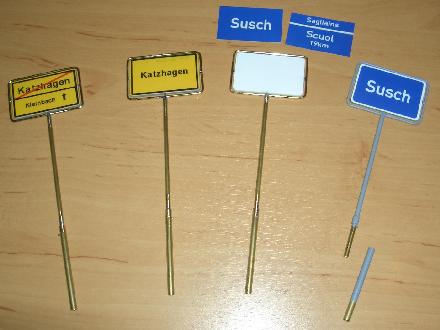
1, 2, 3... a lot - of work for the road constructers
Finally, grey varnish for the parts of made of brass and satin clear varnish
for the complete assembly were applied as a finish to the town sign.
As I hadn't visited Switzerland for a quite a long time, I had forgotten what the rear side of the town signs look like. Fortunately, the swiss authorities made the related legal descriptions available to the public via their website. Unfortunately, these texts are not available in English but there is an appendix which provides graphical examples (especially sign numbers 4.27 and 4.28).
I then recognized that German town signs also have a frame, but the modells for Katzhagen were lacking it. I hardly could cope with this disasterous circumstance and ... well, for details see the picture on the left.
As I hadn't visited Switzerland for a quite a long time, I had forgotten what the rear side of the town signs look like. Fortunately, the swiss authorities made the related legal descriptions available to the public via their website. Unfortunately, these texts are not available in English but there is an appendix which provides graphical examples (especially sign numbers 4.27 and 4.28).
I then recognized that German town signs also have a frame, but the modells for Katzhagen were lacking it. I hardly could cope with this disasterous circumstance and ... well, for details see the picture on the left.
Corn vessels - on the home stretch
After mounting the small parts made of plastic, the additional parts made of brass had to be made and applied. The following pictures visualize this process: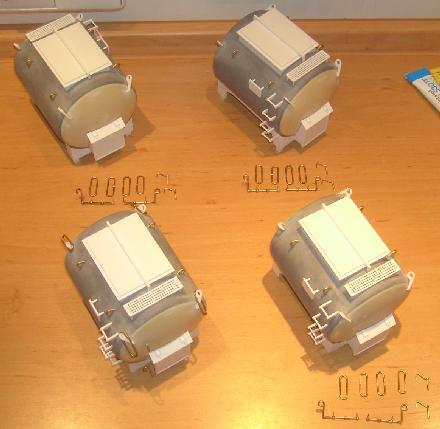
The plastic parts were applied and the brass parts were made.
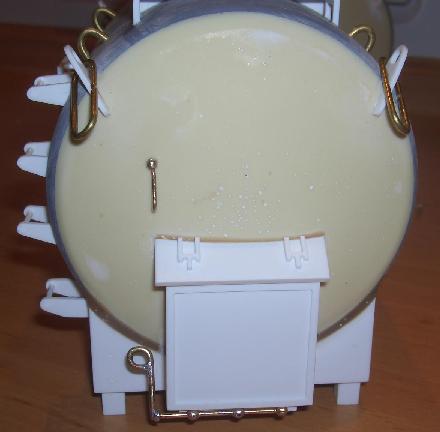
A vessel's end face with the previously manufactured brass parts

Additional parts made from brass wire and railing pillars
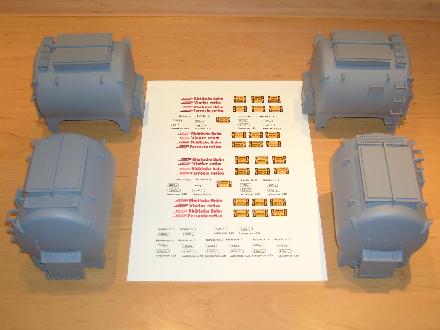
After applying a grey varnish to the vessels they are ready for the decal lettering.
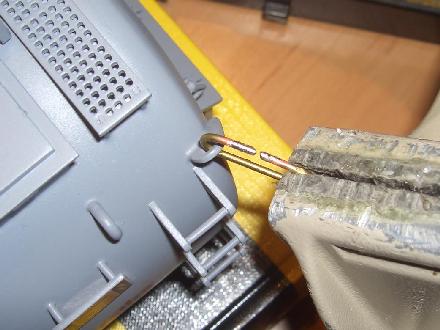
Mounting and varnishing the lugs requires a "third hand".
Both the levers at the switchboxes and the clamps for their covers were made
from
Krick railing pillars (30mm high with 3 eyelets) which needed some minor
modifications and additional parts made from brass wire. The latter were bent
to match their required shape.
The lettering was put togehter at the computer and printed on a sheet of decal film using a colour laser printer. The lettering was applied to the vessels after the grey varnish had dried out sufficiently. A coating of clear varnish was applied as a protective finish.
A third hand was necessary to mount the lugs. Soldering, grinding and varnishing the lugs were impossible without such a tool in this special situation as the picture on the left clearly shows.
The lettering was put togehter at the computer and printed on a sheet of decal film using a colour laser printer. The lettering was applied to the vessels after the grey varnish had dried out sufficiently. A coating of clear varnish was applied as a protective finish.
A third hand was necessary to mount the lugs. Soldering, grinding and varnishing the lugs were impossible without such a tool in this special situation as the picture on the left clearly shows.

After applying the decals, the vessels were finished with a coating of clear varnish (2/3 matt, 1/3 glossy). Done - finally !
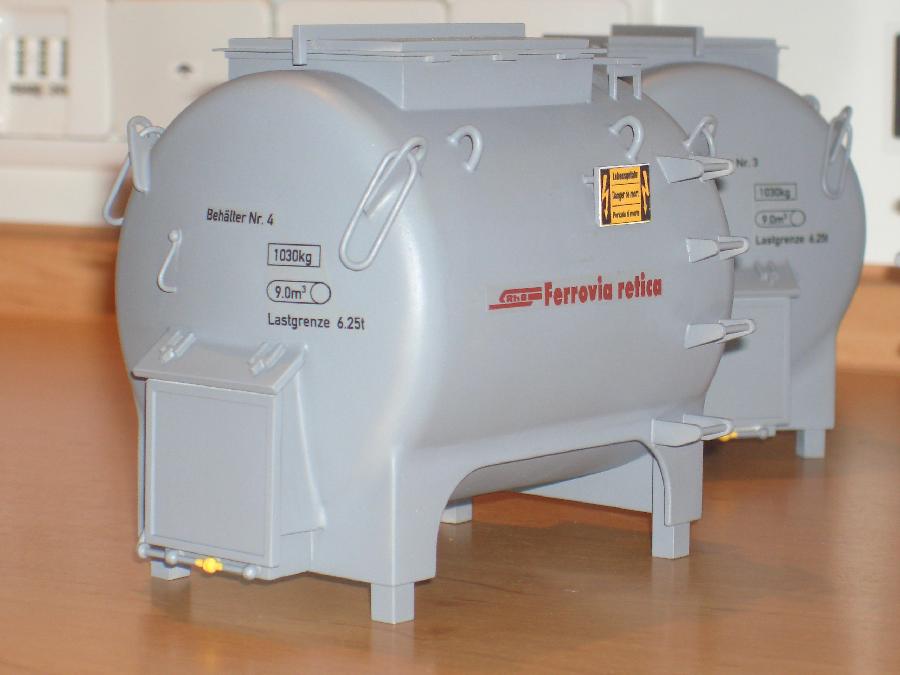
The result rewards the damned abrading...
... which will be the next topic on the agenda.
March 2010 | Archive "Current Affairs" | May 2010

